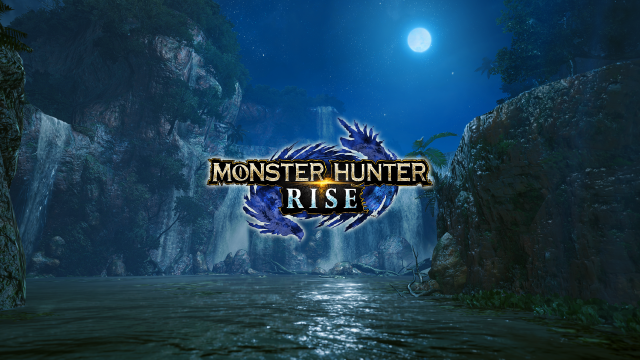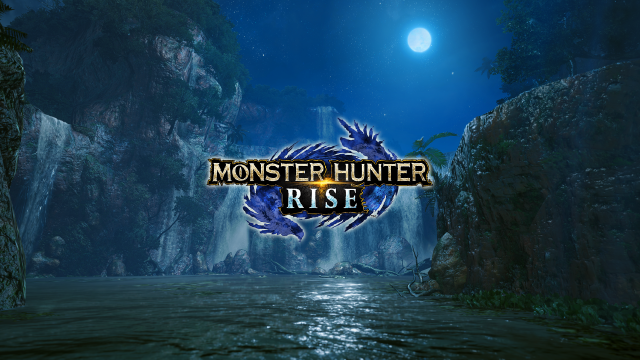UPDATE 01.19.21
We erroneously ran this story with the incorrect writer attached. As noted here, this preview was done by Nick Dollar. Original article below:
The Monster Hunter team at Capcom have recently done a digital event showing off some fantastic new things in the upcoming entry to the Monster Hunter series. Part of this event was the announcement of the limited playable demo that is available now until February 1. So, what’s new to Monster Hunter Rise that you can experience in the demo? The new Wirebug mechanic, Wyvern riding, and Silkbind attacks being the main focus of new things to play with alongside many other minor changes and tweaks.
The Wirebug feels like it’s meant to be a replacement to Monster Hunter World: Iceborne’s Clutch Claw, but the addition of Silkbind attacks means you’re getting a whole toolbox and not just one tool. When using the Wirebug movement is very fluid; it feels great to zip around the map and climb to hidden spots. You’re going to want to be using the Wirebug all the time when traversing the maps with the added speed and mobility it provides. Using is allows you to find extra small buffs and resources and to get to your target that much faster. The benefits don’t stop once you get into combat though, as you can still use the Wirebug to quickly get out of the way of incoming attacks or to set up your own aerial assault.
Each weapon has its own unique attacks that also use Wirebug charges—these are called Silkbind attacks. Using a Wirebug for movement costs one of your two Wirebug charges while Silkbind attacks can spend up to two, depending on which move you used. This is a very clever way to balance these new powerful moves. If you use your charges for offense then you leave yourself with limited mobility for a time until your Wirebug reserve replenishes. The same is true if you are using it for mobility, as you won’t be able to use the Silkbind attacks as often. The importance of the Silkbind attacks or any attack that uses Wirebug charges is that they are the only way to engage with the new mounting mechanic called Wyvern riding.
Wyvern riding is a replacement to mounting from previous games. In those games, to mount the monster you needed to use aerial attacks until the mount sequence began and a minigame was played until you fell off the monster or dropped it to the ground for a moment. In Monster Hunter Rise, Wyvern riding gives you a few different things to do, since you now can directly control the monster while riding it. You can simply ram the monster into a wall a few times to topple it (like the flinch shots from Iceborne), or you can directly attack other monsters in the same locale. Turf wars from Monster Hunter World have seemingly been replaced by this new interactive way to create your very own. It’s quite fun but a little clumsy at times. Getting your monster to line up for an attack can be a bit finicky, but it does pay off when it hits, dealing chunks of damage and getting that other monster closer to being ridden itself.
In previous Monster Hunter games, the mount mechanics resulted in getting kicked off if you ran out of stamina and habing to start all over again, but in Rise you are just given a timer that is actually quite generous. You are able to traverse the map from one end to the other quickly with plenty of time left to brawl other monsters, but each hit you take in return lowers your remaining time on the monster. I’d say this is a much more fun replacement to mounting, and far more balanced than the potentially game-breaking flinch shots from Iceborne.
One last thing to cover is the weapons themselves and how they have changed in Rise, most notably the least played weapon—the Hunting Horn. For most weapons the only changes that have been made are the extra Silkbind attacks and a few minor changes here and there, but the Hunting Horn has been reworked considerably. In all previous games the Hunting Horn was a cumbersome weapon that required you to slam out some notes in sequence and then go into a new stance to play those notes as a song. That whole flow to get all the buffs out to your team was understandably unappealing to many players and while Iceborne did make a few additions to make it a tad stronger, it was still a pain to get the most out of the weapon. In Rise they have simplified the way songs work so that now if you hit two consecutive notes you get the benefits of the song without having to play it. This is a very welcome change as it speeds up the flow of the weapon and allows for much more aggressive play, but it’s not without some drawbacks.
Past Hunting Horns were equipped with a much larger array of songs to play topping out at eight or nine songs of varying usefulness. Here in Rise the Hunting Horn provided is only able to put out three different songs, and from a game balance perspective it can be expected the strength of each of these songs is lower since they can be maintained far easier. One main concern that arises is that these three songs are the only songs that all Hunting Horns can play instead of each horn having its own set of notes and songs. I doubt the Monster Hunter team would simplify the weapon this much but it is still a very real concern and one we won’t be able to confirm until Rise’s release on March 26. The rest of the weapons feel roughly the same as they did in World with a few tweaks here and there that only veteran players would likely notice.
Overall the demo for Monster Hunter Rise is a small slice of the game but it has a lot of meat to it and all of the changes that have been made are improvements to the state of the game. What do you think so far about Rise? Tell us below and on social media!

